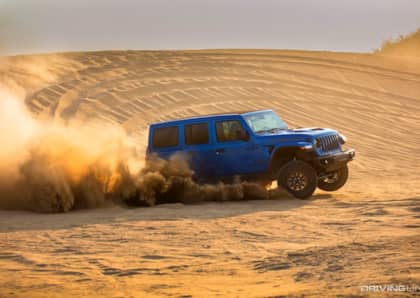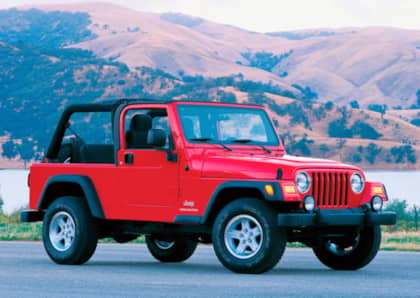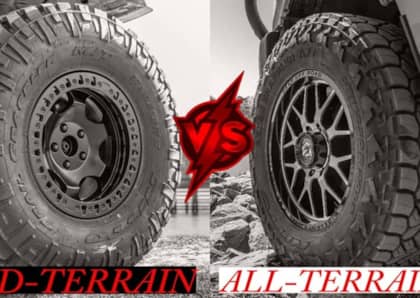The 1990-1994 Jeep Wrangler YJ Renegade Was The Weirdest 'Street Performance' 4x4 SUV Of The '90s
The Jeep Wrangler YJ was the first version of the iconic SUV to be built during Chrysler's ownership of the brand, but it had been designed—polarizing square headlights and all—under the auspices of parent corporation AMC in the mid-1980s. Although the model was a sales success, by the time the 1990s rolled around Chrysler was looking for a way to put its own styling stamp on the off-roader. At the same time, it also wanted to elevate the Wrangler's price point a little higher, prior to going all-in on a complete re-think of the platform.

The answer to both of these desires was the 1990-1994 Jeep Wrangler Renegade, a model that went 'full-'90s' in perhaps the weirdest way imaginable. Designed to tap into the street truck craze that was currently gripping the industry, while also catering to customers seeking the plushest version of Jeep's most basic ride, the Renegade still stands out as an anomaly more than 30 years after it was launched.
Ship 'Em Out
The Renegade might have been a Chrysler initiative, but its production was actually outsourced. Jeep shipped loaded-up versions of the YJ Wrangler to a company called Autostyle, which replaced the standard high-fender look of the vehicle with a unique set of aero-influenced bumpers front and rear, made entirely of fiberglass and connected by body-length flares and rocker panel extensions (with the latter featuring a small, integrated step).

Integrated fog lights were set into the forward flares, and the front bumper jutted out like a shelf. Colors were initially limited to white, red, and black, expanding to include blue and eventually bronze, further setting the model apart from its brethren.

To say the Renegade looked unusual was an understatement. Despite featuring the kind of chunky body kit more commonly seen on lowered compact pickups like the GMC Syclone and other, more fanciful concept vehicles of the era, the Wrangler Renegade delivered the same tall ground clearance as the standard version of the YJ. This, plus the digital-sleekness of its 'RENEGADE' decals gave its vaguely futuristic first impression a bit of a disconnect from its off-road mission statement.

The name was a familiar one, even if the look was not: Jeep offered a more basic Renegade decal-and-wheels package on the CJ as far back as 1970, lasting until 1983's CJ-7 version.

Further confusing things was the lack of any actual street performance gear included with the Renegade package. The closest the Jeep got was making a 4.0L inline six-cylinder engine standard (it was optional elsewhere in the Wrangler line-up), but its 180 hp and just over 200 lb-ft of torque saw it post a 0-60 mph time in the 12 second range. This was hardly the realm of performance, regardless of whether the vehicle was equipped with a 5-speed manual or available 3-speed automatic transmission. Four-wheel drive, was of course, included with every Renegade model.

The rest of the Renegade Decor Group (as the package was officially known) included 15-inch aluminum rims, the nicest interior furnishings of any TJ (with a leather-wrapped steering wheel and actual carpeting), intermittent windshield wipers, upscale seats, power steering, and a soft top. It cost about $4,000 for the Renegade's charms, which was close to a third of the price of the Wrangler at the time, and you had to add another $900 or so if you wanted to include a hardtop.
Odd One Out
There's no question that the Jeep Wrangler Renegade YJ's visual personality is an acquired taste. From a modern perspective it's a fine example of early '90s exuberance, but at the time it had trouble catching on with Jeep fans who were puzzled by the existence of a Wrangler that was more likely to have its fiberglass panels torn off on the trail than dazzle on the street.

Then there was the price. Asking $4,000 for what amounted to an appearance package was another affront to the sensibilities of YJ fans more accustomed to forking over extra cash in exchange for greater off-road capabilities rather than style points. These two details obscured the fact that Chrysler had actually built a very comfortable version of the Wrangler that was well suited for daily driving duties (despite the reputation of the slippery-when-wet sideboards that made climbing inside a treacherous task in the rain).

Whatever the reason, the Renegade's rarity today is due to its inability to connect with customers at the time of its release. The YJ has always been scorned for its square headlights, and adding the Renegade's square 'everything else' to that equation didn't earn it many champions. The flip-side is that it represents a unique way to experience a classic Jeep, with garage-kept examples that have never seen driving more rugged than broken pavement far more common than beaten-down adventure rigs. As a result, prices are slowly starting to rise on the most misunderstood Wrangler model ever built.











